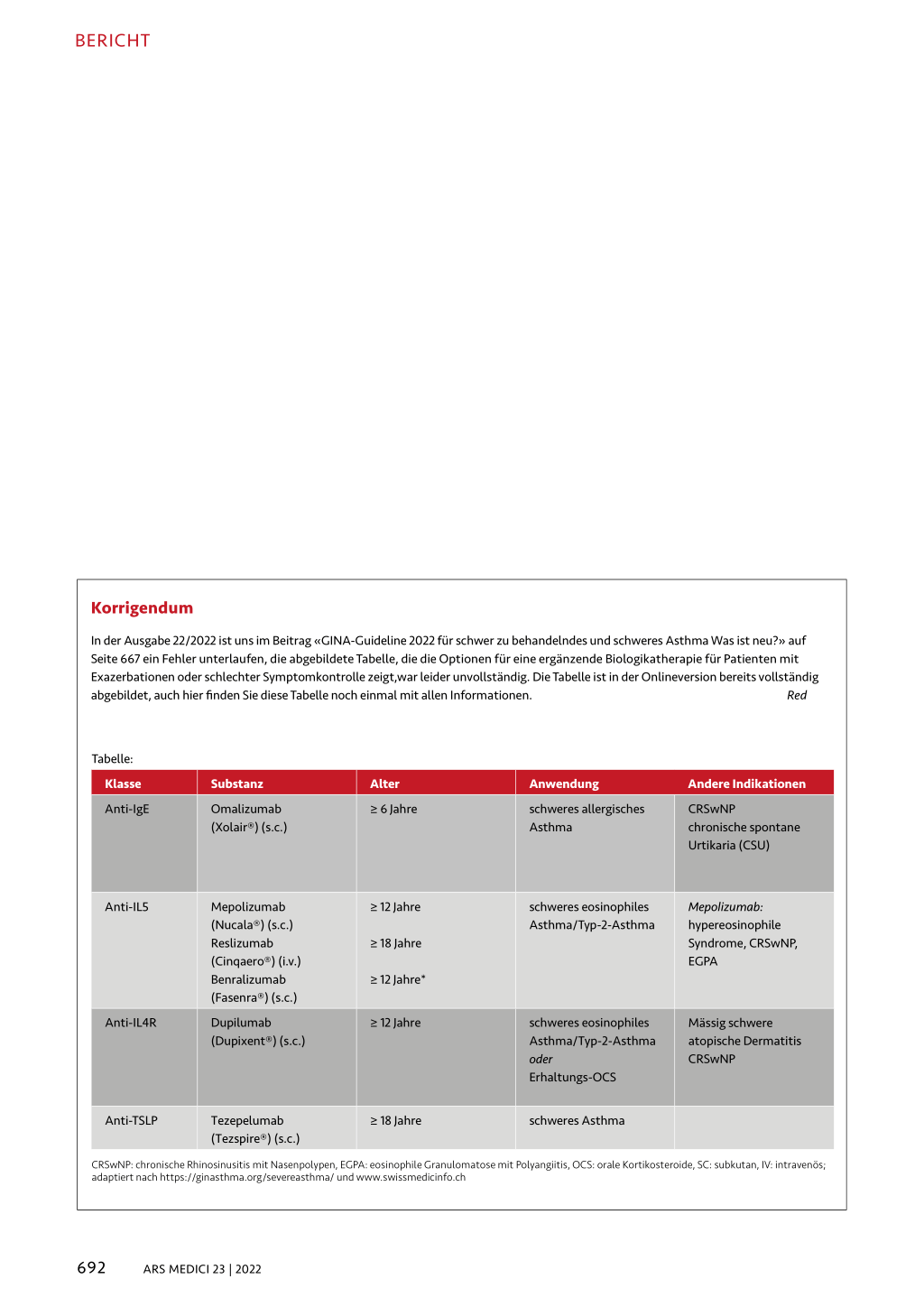Transkript
BERICHT
Korrigendum
In der Ausgabe 22/2022 ist uns im Beitrag «GINA-Guideline 2022 für schwer zu behandelndes und schweres Asthma Was ist neu?» auf
Seite 667 ein Fehler unterlaufen, die abgebildete Tabelle, die die Optionen für eine ergänzende Biologikatherapie für Patienten mit
Exazerbationen oder schlechter Symptomkontrolle zeigt,war leider unvollständig. Die Tabelle ist in der Onlineversion bereits vollständig
abgebildet, auch hier finden Sie diese Tabelle noch einmal mit allen Informationen.
Red
Tabelle: Klasse Anti-IgE
Substanz
Omalizumab (Xolair®) (s.c.)
Alter ≥ 6 Jahre
Anwendung
schweres allergisches Asthma
Andere Indikationen
CRSwNP chronische spontane Urtikaria (CSU)
Anti-IL5 Anti-IL4R
Mepolizumab (Nucala®) (s.c.) Reslizumab (Cinqaero®) (i.v.) Benralizumab (Fasenra®) (s.c.)
Dupilumab (Dupixent®) (s.c.)
≥ 12 Jahre ≥ 18 Jahre ≥ 12 Jahre* ≥ 12 Jahre
schweres eosinophiles Asthma/Typ-2-Asthma
Mepolizumab: hypereosinophile Syndrome, CRSwNP, EGPA
schweres eosinophiles Asthma/Typ-2-Asthma oder Erhaltungs-OCS
Mässig schwere atopische Dermatitis CRSwNP
Anti-TSLP
Tezepelumab (Tezspire®) (s.c.)
≥ 18 Jahre
schweres Asthma
CRSwNP: chronische Rhinosinusitis mit Nasenpolypen, EGPA: eosinophile Granulomatose mit Polyangiitis, OCS: orale Kortikosteroide, SC: subkutan, IV: intravenös; adaptiert nach https://ginasthma.org/severeasthma/ und www.swissmedicinfo.ch
692
ARS MEDICI 23 | 2022
